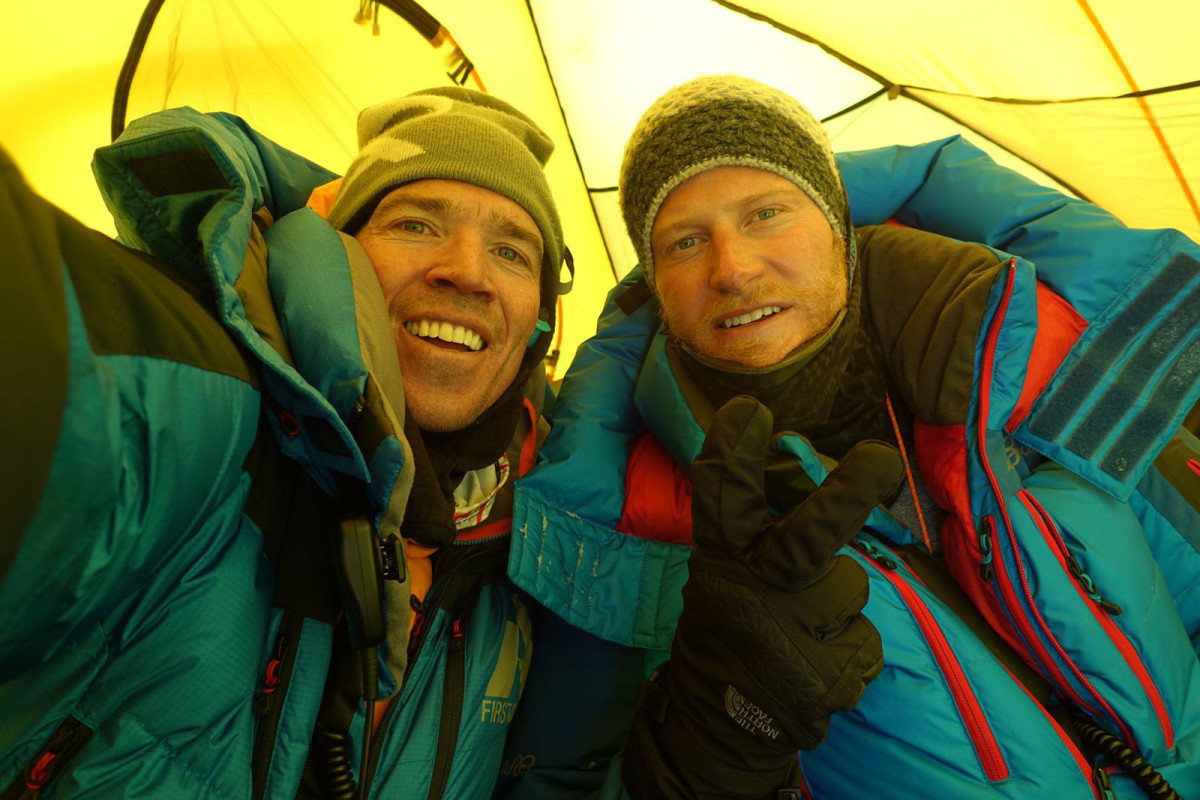The Everest Diet: How a climber reprogrammed his metabolism to try to reach the peak

On May 23, 2016, less than a thousand feet from the summit of Everest, Adrian Ballinger’s energy reserves ran out. Ballinger was attempting his first ascent without breathing supplemental oxygen—he’d already been to the top of the world’s highest mountain six times in a climbing career that spans two decades—but on the knife-edge ridge near the top of the 29,035-foot peak, fatigue overwhelmed him.
Cold seeped into Ballinger’s body and he lost all feeling in his hands. Unable to operate the mechanical device on the rope that would support his weight if he slipped, Ballinger was essentially solo climbing Everest. On his right, the ground dropped away thousands of feet towards Nepal; on his left it dropped towards Tibet. Watching his climbing partner, Cory Richards, forge on ahead, Ballinger turned back, defeated.

Last fall, home in California, Ballinger went searching for answers, trying to work out why he had struggled so badly on that final summit push. He hired two coaches, Scott Johnston and Steve House, as advisers. Both Johnston and House are experienced mountain climbers themselves, and co-wrote a manual on strength and conditioning for climbers called Training for the New Alpinism before founding their coaching company, Uphill Athlete.
Johnston and House sent Ballinger to the UC Davis Sports Medicine Clinic in Sacramento, Calif., for metabolic testing. There he walked on a treadmill wearing a breathing mask while Judd Van Sickle, a biomechanical engineer, steadily raised the gradient up to 25%. By measuring Ballinger’s heart rate and the amount of carbon dioxide and oxygen he was breathing out, Van Sickle could determine what energy sources Ballinger’s body relied on at different exercise intensities.
Ballinger’s body switched from burning mostly fats to mostly carbohydrates at a heart rate of around 115 beats per minute. According to Van Sickle, considering the average person, “you’ve got 1,500 calories worth of carbohydrates stored up at any given time, you’ve got 50,000 calories worth of fat.” At even a moderate training intensity, Ballinger was quickly burning through the energy stores his body was best adapted to use.
Amazing Race: Nine days in the Moroccan desert with no GPS, no cellphones—and no men
At normal altitudes, or using supplemental oxygen, that had never been a serious problem because he could replenish those reserves with energy drinks and gels during exercise, and with post-workout meals of pizza, pasta, and cookies. But above 26,000 feet, in the oxygen-starved Death Zone on the slopes of Everest, Ballinger’s body had been in survival mode.
“The summit of Everest is really right on the cusp of humans’ ability to be able to transport and use oxygen,” explains Anne Friedlander, an adjunct professor in human biology at Stanford University. With oxygen at a premium, many bodily functions, including digestion, shut down. He couldn’t replace lost carbs, and his body struggled even just to produce enough heat to fend off frostbite.
Highlighting how narrow the margins of survival can be up in the Himalayas, Ueli Steck, one of the most accomplished climbers in the world, died in an accident there last weekend. The Swiss alpinist was climbing a peak called Nuptse alone, in preparation for an ascent of Everest via a new route. Steck is believed to have fallen about 3,000 feet to his death.
Following the advice of Johnston and House, Ballinger radically shifted both his diet and training routine, fueling himself mostly with fat, and working out mostly at fat-burning intensities.
“It’s not the diet, and it’s not the training,” Johnston stresses. “It’s the diet and the training.” The theory was that if he could rely on fat as much as possible, he’d save his carb reserves for when he really needed them.

Since he got his test results in December, Ballinger has eaten just one cookie, a 41st birthday treat in February. His coffee doesn’t come with cream and sugar, but with cream, coconut oil, and butter. An 8oz cup holds around 500 calories.
He started wearing a heart rate strap every time he worked out, aiming to keep his intensity below 140 beats per minute.
“The shift for me was hard because I was working out at the same time,” Ballinger says. At first he struggled with headaches and fatigue without sugar to power him, and couldn’t keep up with training buddies at such low work rates, but within a few weeks his body began to adapt.
Before flying out to Tibet this season, Ballinger had a follow-up metabolic test at the UC Davis clinic on Apr. 5. In just four months, he had shifted his fat-burning to carb-burning transition point from 115 beats per minute up to 141.

“What I saw on my test results today gives me a lot of confidence that what I did worked,” Ballinger said afterwards, digging into a plate of ribs, meatballs, and salad—carbs conspicuous in their absence. Perhaps this means he will be able to better conserve his carbs until he is far up on the mountain. But there is also the possibility he may have trained his body too well not to use carbs.
“My biggest fear would be that he’s preconditioning himself not to use carbohydrate, and then he’ll get up there and when he’ll need to use it, his body won’t be adapted to use it,” says Friedlander.
The real test of Ballinger’s Everest diet won’t be until the end of May, when he and fellow Eddie Bauer alpine athlete Richards make one more push for the summit. In the age of social media, the rest of us below the snowline will be able to monitor the results closely, too. Almost all of their expedition will be blogged, snapped, ’grammed, YouTubed and tracked on Strava.
To watch the full experience and explore more exclusive virtual reality content download the LIFE VR app for iOS and Android or visit si.com/capturing-everest.
